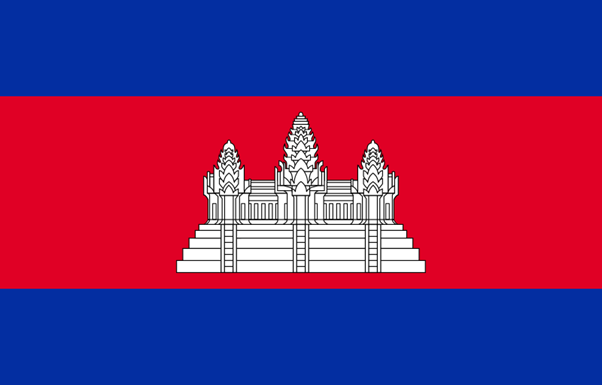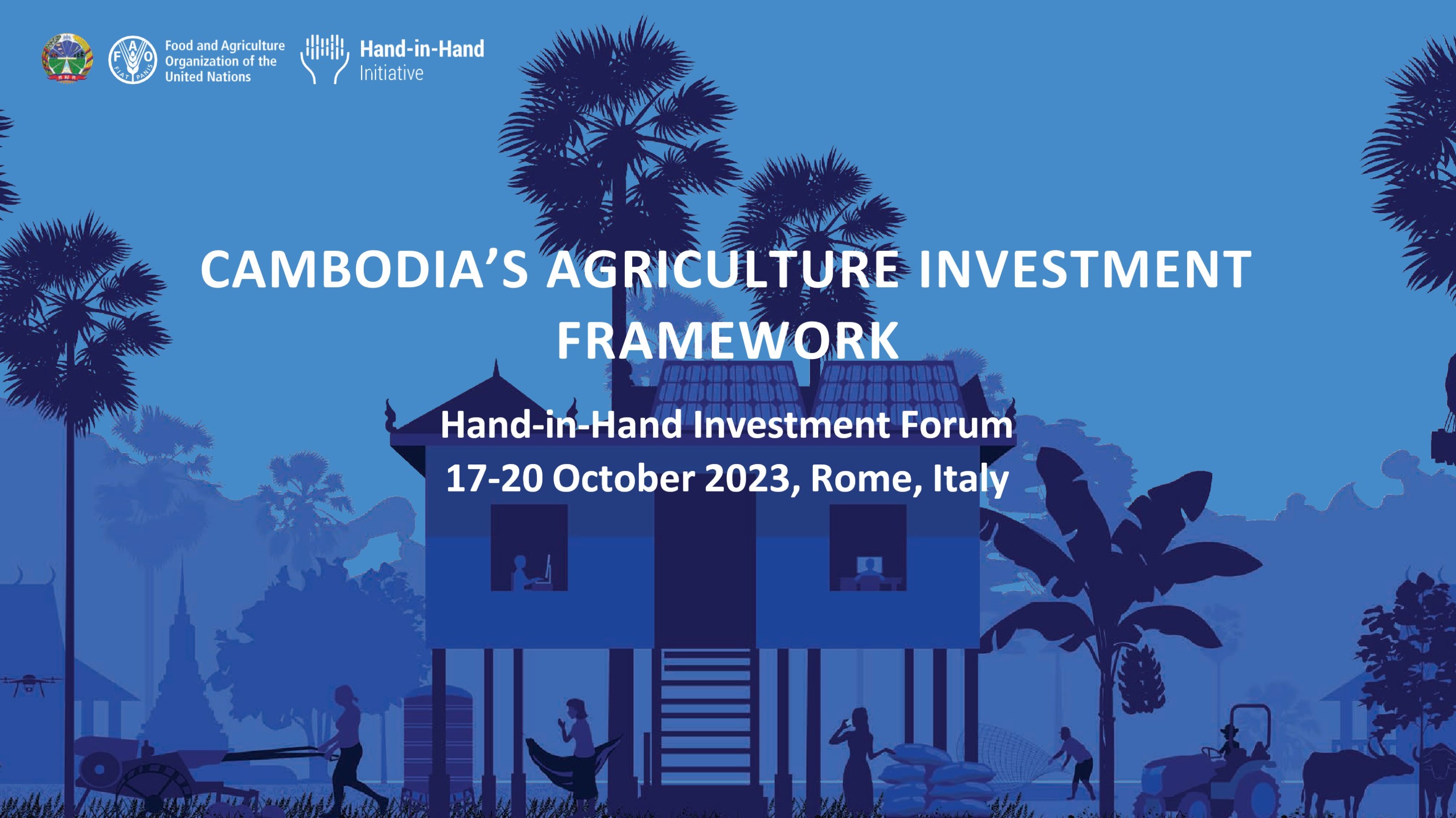INVESTMENT PRESENTATION
THE PROPOSAL
Cambodia has maintained strong macro-economic stability and robust economic growth over the past 20 years and is well known as one of the fastest growing economies in the world, with an average annual growth rate of about 8 percent. Prior to the outbreak of the COVID-19, Cambodia has achieved a remarkable reduction in multidimensional poverty by almost 50% over the last 10 years (from 36.7 percent in 2014 to 16.6 percent in 2022) . This has transformed Cambodia into an attractive destination for investment.
Agriculture is a key economic pillar of Cambodia, with 22% of the country’s GDP (2022) and 2.6 million people employed in the sector. The Royal Government of Cambodia (RGC) has recently launched the Pentagon Strategy Phase I (2023 – 2028: PS Phase I) for Growth, Employment, Equity, Efficiency, and Sustainability, which is a long-term socio-economic development strategy to be implemented over the next 25 years. It outlines five strategic pentagons: one of which is resilient, sustainable and inclusive economic development where agriculture development, which has been further elevated as one of the Prime Minister’s priority development programme areas and will receive considerable targeted support by the RGC, particularly to attract further investment in the sector. The National Agricultural Development Policy (2022 – 2030) compliments and operationalises the PS Phase I by setting out a vision to transform the agrifood sector to be more competitive, inclusive, resilient and sustainable, leading to further and significant increases in farming family’s incomes, prosperity and wellbeing.
Through the Hand in Hand Initiative, which is led by the Ministry of Agriculture, Forestry and Fisheries (MAFF), four key agriculture commodity value chains that require targeted investment to unlock economic potential, have been identified, rice, cashew, mango and aquaculture fish.
Poverty
Potential
Efficiency
COMMODITIES AND INTERVENTIONS
Rice
Rice is the staple crop of Cambodia accounting for 3.5 Mha of land use, annual production of 11.62 Mmt of paddy rice, it is the main source of income for rural farmers and Cambodia’s largest agriculture export commodity (USD 1 billion). Presently, 67 % of the crop is exported as paddy and only 33 % is exported as milled rice. China is the largest importer of Cambodian milled rice (45%), followed by Europe (32%) and the rest of the world (23%). Most paddy rice has been exported to Vietnam.
Cambodia has significant opportunities to increase the volume of milled rice exported due to its 6.29 Mmt surplus production and with the focus on organic or unique varieties (including the World’s Best Rice Variety 2022, Phka Romdoul). Fragrant and organic fragrant rice varieties are well known and preferred in many markets globally, with opportunities for significant increase. The intervention areas for investment are increasing resilient and sustainable rice production systems, increasing rice storage capacity, increasing rice milling capacity and promoting milled rice export to global markets.
Cashew
Cashew production in Cambodia has expanded exponentially, and Cambodia is now the third largest cashew producer globally. The current area under production is 435,733 ha with an annual production of 508,283 mt. Production is expected to increase by a further 23% in the coming 5 years as 104,558 ha of additional planting area mature. Approximately 90% of cashew are exported from Cambodia unprocessed, which is related to previous investment focussing on production rather than processing.
Because of the scale of cashew production in Cambodia and the lack of in country processing capacity, investment in cashew can provide significant economic returns through the targeting of sustainable deforestation free production, cashew processing / packaging, and export promotion. The injection of finance and mechanised processing into the cashew value chain will connect premium Cambodian processed product to global markets and will realize Cambodia’s vision to be a producer and exporter of the highest quality cashew products globally.
Mango
Mango production in Cambodia has grown considerably in recent years with the planting area reaching 152,073 ha and an annual production of 2.2 Mmt. Production is expected to increase by a further 29% in the coming 5 years as 44,101 ha of additional planting area mature. Approximately 11% of Cambodia’s highly desirable mango varieties have been exported as fresh produce to global markets, 85% are exported to neighbouring countries for processing, and only a small volume of mango around 4% have previously been processed in Cambodia for both domestic consumption and export.
Significant opportunities exist for increased fresh mango export to global markets and for value addition and processing within Cambodia for domestic and export markets. Investment in improved SPS facilities and an increased number of cold store and cold chain infrastructure and mango processing facilities will connect the premium Cambodian fresh and processed mango to domestic and global markets.
Aquaculture
Cambodia is endowed with the largest freshwater lakes and rivers in South East Asia, which allows for significant freshwater aquaculture production. Currently, almost half Mmt of aquaculture products are produced annually and Cambodia has the potential for this to increase by 10% per year over 7 years. Fish and fish-based products are the most consumed protein source in Cambodia. Increased production and processing would address domestic production shortfalls in both fresh and processed fish products and would allow for greater export opportunities.
Domestic and export market demands targeting Cambodia’s twenty primary fish species as well as new species. Investment in critical production stages, key driving facilities (hatchery farms, feed production and research), processing factories, and SPS systems will strengthen the value chain for improved profitability and competitive positioning of Cambodian aquaculture.




